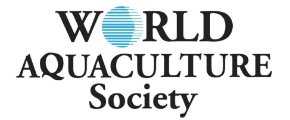EARTHWORM MEAL AS PROTEIN SOURCE IN NILE TILAPIA DIETS
Tanzania has experienced dwindling fish catch due to overfishing and environmental degradation resulting in annual yield of about 350,000 MT which is half of the potential. This has resulted in low per capita fish consumption of 8 kg, far less that the global average of 20 kg. On the other hand, aquaculture has remained subsistence practiced in small semi-intensive freshwater ponds which are mostly stocked with Nile tilapia. Lack of quality affordable aquafeeds is one of the limiting factors as fishmeal and oil seed cakes which are main sources of protein are scarce and costly. Earthworms are locally available and relatively affordable and have high protein content, thus potential alternative protein source. This study was conducted to evaluate earthworm meal (EWM) as alternative protein source in practical aquafeeds. The earthworms were produced using cow manure as substrate. Five isonitrogenous with 30% crude protein were formulated to contain graded levels of EWM (0, 12, 24, 40 & 45%) as shown in Table 1. Each diet was randomly assigned in triplicate to experimental units containing 14 tilapia juveniles each with an average weight of 2.6 g. The diets were fed for eight weeks collecting data on body weights and feed intake. Best growth, feed utilization and cost effectiveness was observed in fish fed diet EWM40 (Table 2). Therefore, EWM can be included at 40% in Nile tilapia diets containing 5% fish meal and 5% cotton seedcake without compromising performance.










